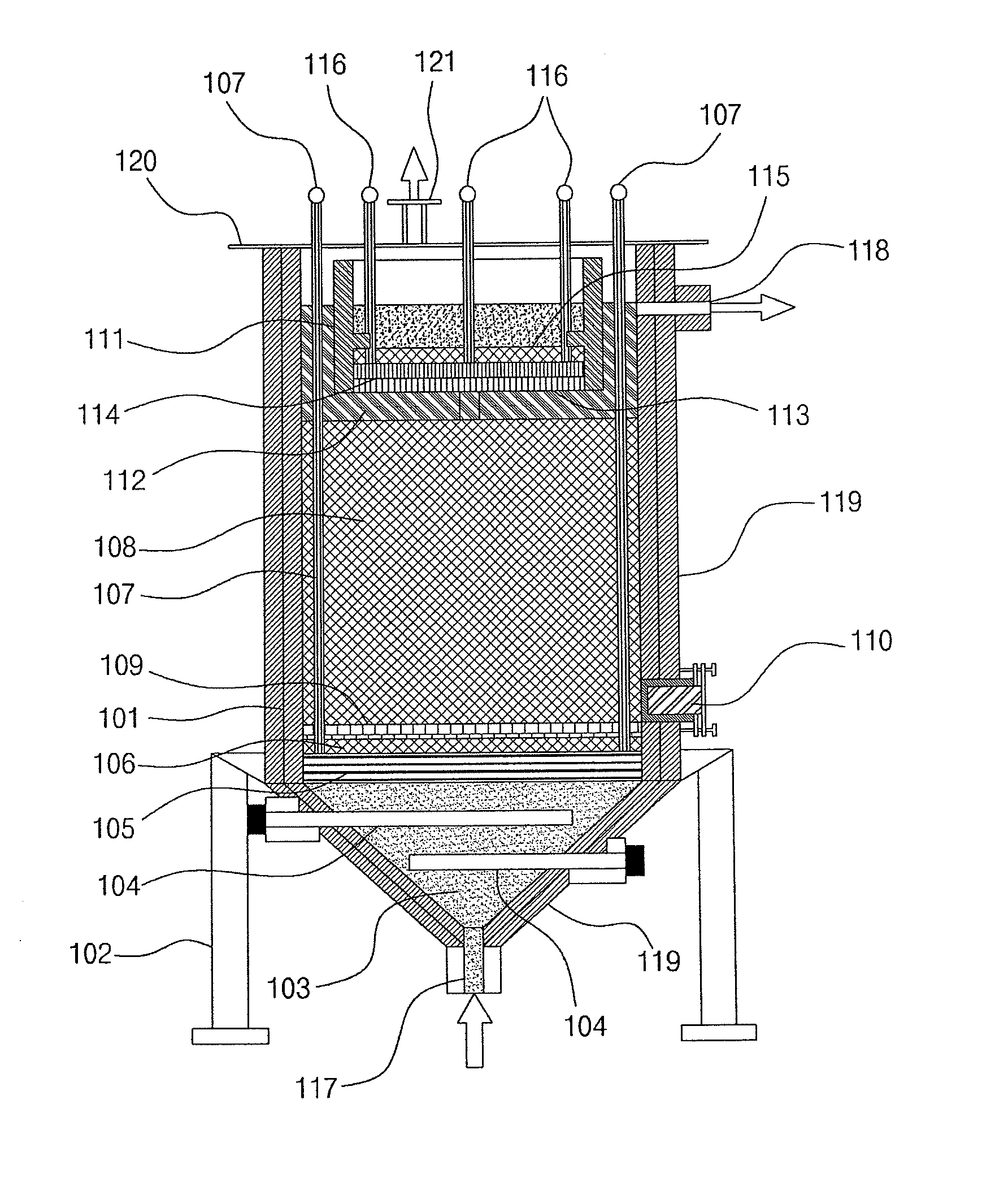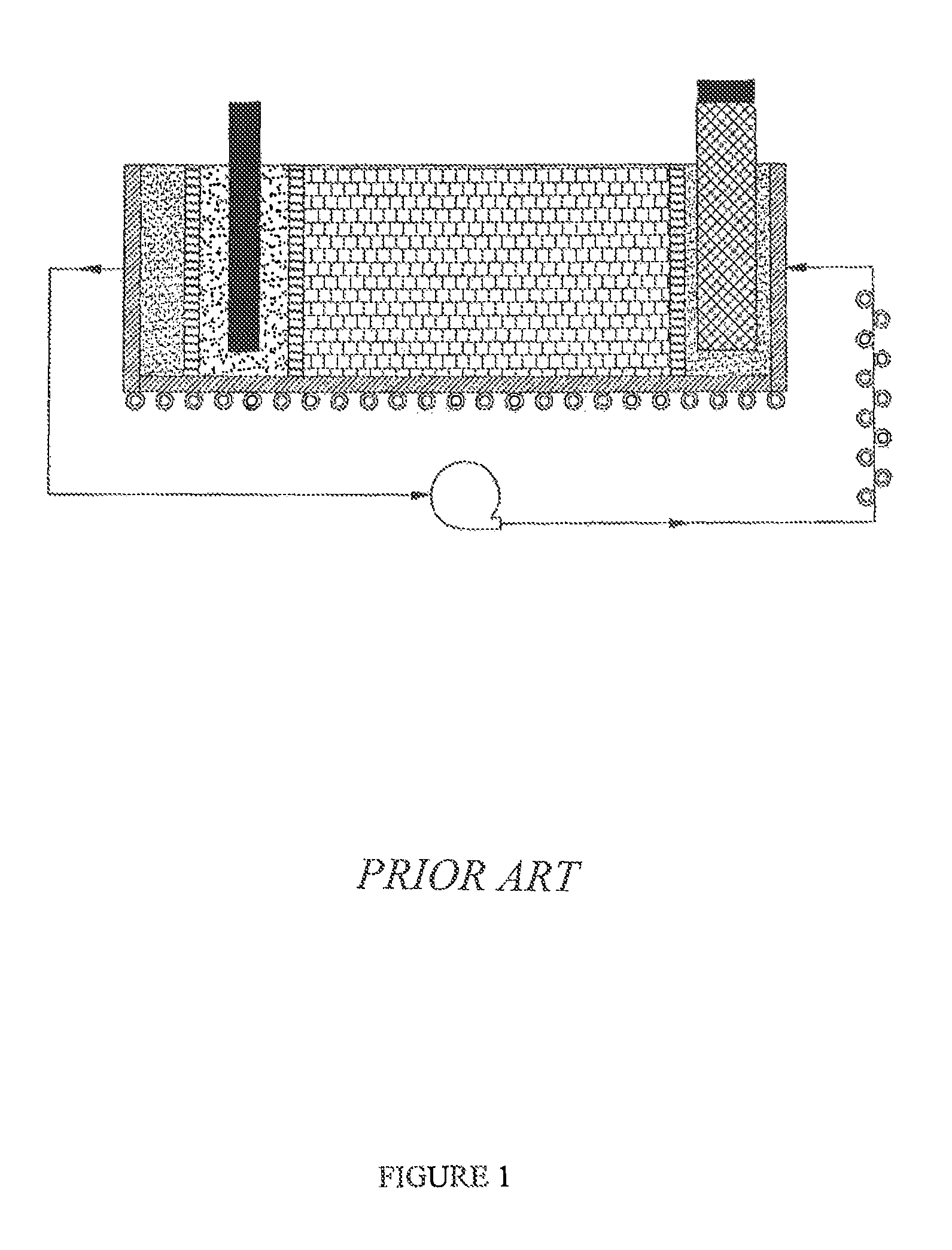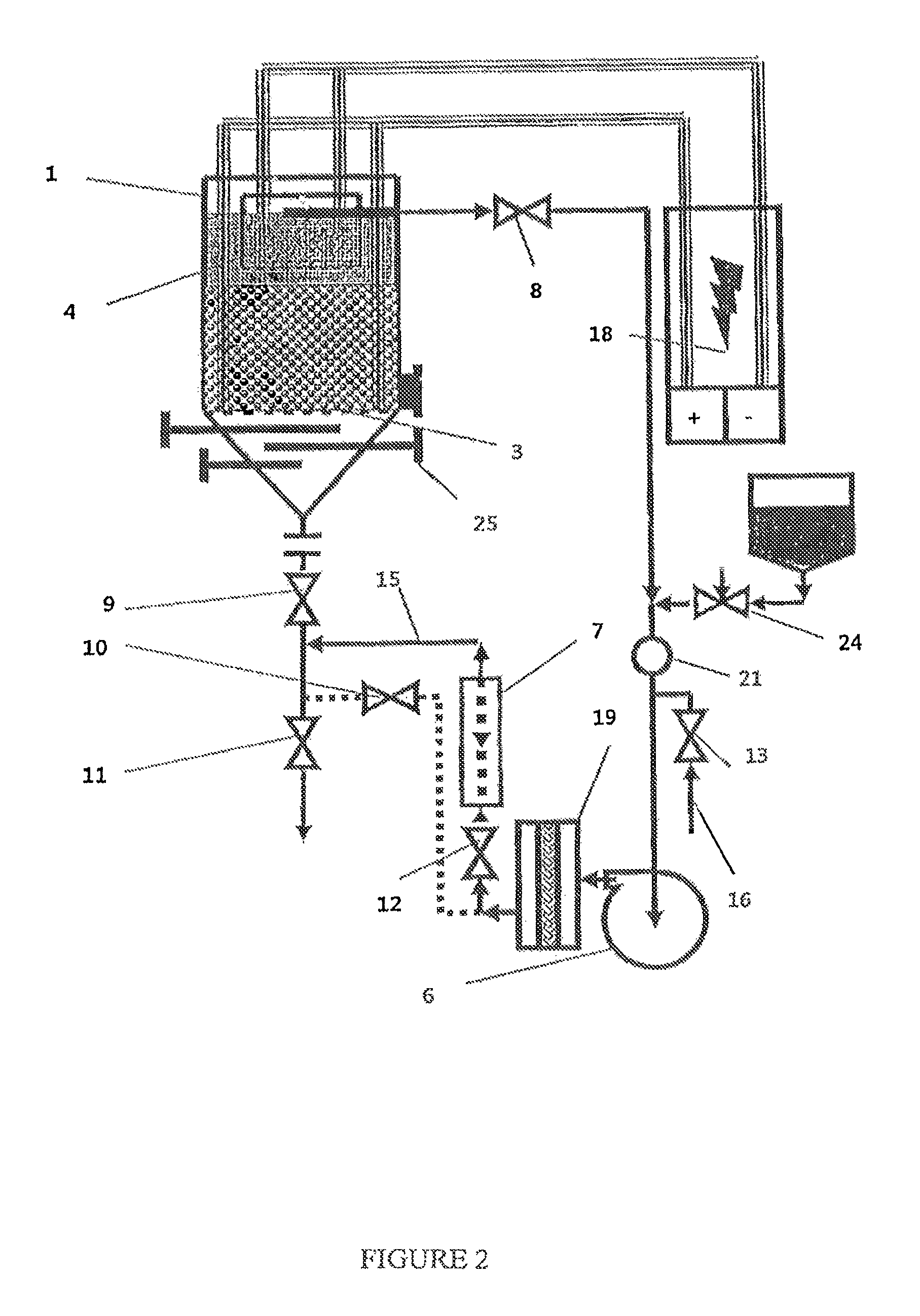Method and apparatus for extracting noble metals from inorganic granular waste catalysts
a waste catalyst and inorganic granular technology, applied in the field of electrochemical hydrometallurgy, can solve the problems of increasing economic losses, additional equipment, and reducing the efficiency of extracting noble metals, and achieve the effect of convenient use and realization
- Summary
- Abstract
- Description
- Claims
- Application Information
AI Technical Summary
Benefits of technology
Problems solved by technology
Method used
Image
Examples
example
Example 1
Example of Operation of Vertical Electrolytic Cell
[0046]In order to leach a noble metal-containing inorganic (metal oxide) dielectric granular waste catalyst (e.g., a 0.02-0.03% palladium-alumina catalyst), the catalyst is introduced through the top of the cylindrical portion 101 of the electrolytic cell. Before the catalyst is introduced, the cathode compartment 111 is dissembled from the electrolytic cell. A leaching electrolyte (e.g., 3% HCl aqueous solution) is introduced into the conical flow distributor 103 through the lower inlet 117, and the inside of the distributor is heated to a predetermined temperature by the electric heater 104. The heated electrolyte laminar flow passes through the dielectric supporting lattice cell 105, is oxidized in the horizontal anode lattice 106, and passes through the porous protecting / supporting lattice 109 to the three-dimensional porous electrode including the regenerated granular catalyst. The noble metal is leached from the granul...
PUM
| Property | Measurement | Unit |
|---|---|---|
| width | aaaaa | aaaaa |
| length | aaaaa | aaaaa |
| length | aaaaa | aaaaa |
Abstract
Description
Claims
Application Information
 Login to View More
Login to View More - R&D
- Intellectual Property
- Life Sciences
- Materials
- Tech Scout
- Unparalleled Data Quality
- Higher Quality Content
- 60% Fewer Hallucinations
Browse by: Latest US Patents, China's latest patents, Technical Efficacy Thesaurus, Application Domain, Technology Topic, Popular Technical Reports.
© 2025 PatSnap. All rights reserved.Legal|Privacy policy|Modern Slavery Act Transparency Statement|Sitemap|About US| Contact US: help@patsnap.com



